Mobile Devices
Practical Guides for Librarians
 About the Series
About the Series
This innovative series written and edited for librarians by librarians provides authoritative, practical information and guidance on a wide spectrum of library processes and operations.
Books in the series are focused, describing practical and innovative solutions to a problem facing todays librarian and delivering step-by-step guidance for planning, creating, implementing, managing, and evaluating a wide range of services and programs.
The books are aimed at beginning and intermediate librarians needing basic instruction/guidance in a specific subject and at experienced librarians who need to gain knowledge in a new area or guidance in implementing a new program/service.
 About the Series Editor
About the Series Editor
The Practical Guides for Librarians series was conceived by and is edited by M. Sandra Wood, MLS, MBA, AHIP, FMLA, Librarian Emerita, Penn State University Libraries.
M. Sandra Wood was a librarian at the George T. Harrell Library, the Milton S. Hershey Medical Center, College of Medicine, Pennsylvania State University, Hershey, PA, for over thirty-five years, specializing in reference, educational, and database services. Ms. Wood worked for several years as a development editor for Neal-Schuman Publishers.
Ms. Wood received an MLS from Indiana University and an MBA from the University of Maryland. She is a fellow of the Medical Library Association and served as a member of MLAs Board of Directors from 1991 to 1995. Ms. Wood is founding and current editor of Medical Reference Services Quarterly , now in its thirty-fifth volume. She also was founding editor of the Journal of Consumer Health on the Internet and the Journal of Electronic Resources in Medical Libraries and served as editor/coeditor of both journals through 2011.
Titles in the Series
- How to Teach: A Practical Guide for Librarians by Beverley E. Crane
- Implementing an Inclusive Staffing Model for Todays Reference Services by Julia K. Nims, Paula Storm, and Robert Stevens
- Managing Digital Audiovisual Resources: A Practical Guide for Librarians by Matthew C. Mariner
- Outsourcing Technology: A Practical Guide for Librarians by Robin Hastings
- Making the Library Accessible for All: A Practical Guide for Librarians by Jane Vincent
- Discovering and Using Historical Geographical Resources on the Web: A Practical Guide for Librarians by Eva H. Dodsworth and L. W. Lalibert
- Digitization and Digital Archiving: A Practical Guide for Librarians by Elizabeth R. Leggett
- Makerspaces: A Practical Guide for Librarians by John J. Burke
- Implementing Web-Scale Discovery Services: A Practical Guide for Librarians by JoLinda Thompson
- Using iPhones and iPads: A Practical Guide for Librarians by Matthew Connolly and Tony Cosgrave
- Usability Testing: A Practical Guide for Librarians by Rebecca Blakiston
- Mobile Devices: A Practical Guide for Librarians by Ben Rawlins
Mobile Devices
A Practical Guide for Librarians
Ben Rawlins
Practical Guides for Librarians, N o . 12
ROWMAN & LITTLEFIELD
Lanham Boulder New York London
Published by Rowman & Littlefield
A wholly owned subsidiary of The Rowman & Littlefield Publishing Group, Inc.
4501 Forbes Boulevard, Suite 200, Lanham, Maryland 20706
www.rowman.com
16 Carlisle Street, London W1D 3BT, United Kingdom
Copyright 2015 by Rowman & Littlefield
All rights reserved . No part of this book may be reproduced in any form or by any electronic or mechanical means, including information storage and retrieval systems, without written permission from the publisher, except by a reviewer who may quote passages in a review.
British Library Cataloguing in Publication Information Available
Library of Congress Cataloging-in-Publication Data
Rawlins, Ben, 1982
Mobile devices : a practical guide for librarians / Ben Rawlins.
pages cm. (Practical guides for librarians ; 12)
Includes bibliographical references and index.
ISBN 978-0-8108-9258-3 (pbk. : alk. paper) ISBN 978-0-8108-9259-0 (ebook)
1. Mobile communication systemsLibrary applications. 2. Public services (Libraries)Technological innovations. I. Title.
Z680.5.R39 2015
025.042dc23 2014026972
 The paper used in this publication meets the minimum requirements of American National Standard for Information SciencesPermanence of Paper for Printed Library Materials, ANSI/NISO Z39.48-1992.
The paper used in this publication meets the minimum requirements of American National Standard for Information SciencesPermanence of Paper for Printed Library Materials, ANSI/NISO Z39.48-1992.
Printed in the United States of America
Preface
The release of the iPhone in 2007 was a catalyst for the mainstream adoption of mobile technology. While it is true that mobile technology existed before the introduction of the iPhone, Apples device gave us a glimpse into what was possible with mobile technology. Not only did we have a cell phone, we had a smartphonea mobile device that was able to make calls, send text messages, check e-mails, browse the Web, and run applications. It was built on an operating system specifically designed for a mobile device. The success of the iPhone led many other technology companies to begin developing smartphones, and Google created the rival mobile operating system Android. Mobile devices have significantly changed the way that we, as a society, access information. They have also changed what we expect to be able to do with our devices. No longer are these devices just about accessing information; they have become entrenched in our lives. They are now starting to control our other electronic devices, and in some cases our home security systems.
The rapid adoption of mobile technology has had a significant impact on various facets of society, one of those being libraries. With more users coming to the library equipped with mobile devices, librarians need to develop the necessary skills to reach this growing user base. Developing and offering mobile services and resources can seem like a daunting and intimidating task, but rest assured it can be done, and done well. Mobile Devices: A Practical Guide for Librarians will give you a broad overview of the current mobile landscape, what it means for libraries, and how to determine what mobile devices to target, along with practical ideas and examples of how to use mobile devices in a variety of ways. Among other things, Mobile Devices includes snippets of code for mobile websites and native applications for the iOS and Android mobile operating systems to give you a starting point.
Additionally, Mobile Devices: A Practical Guide for Librarians will aid you and your library as you go through the process of planning, developing, implementing, marketing, and evaluating mobile services. Based on research and experience using and developing mobile websites and applications, this book includes information and ideas regarding:
- Why mobile technologies are important for libraries
- Developing mobile websites and applications for specific mobile platforms such as iOS and Android using existing Web technologies such as HTML, CSS, and JavaScript
- Marketing strategies to make users aware of mobile services
- Evaluating mobile services
- Emerging mobile technology
This book is aimed at librarians interested in mobile technologies, both beginners and experienced librarians, who are looking for ideas and examples of how to implement mobile technologies and services. Mobile Devices: A Practical Guide for Librarians contains eleven chapters. Chapter 1, Why Mobile Matters, provides a broad overview of the current mobile landscape, as well as the adoption of various mobile devices like smartphones, tablets, and e-readers. It contains information regarding the expanding use of these devices and the potential that many corporations see in mobile technology.
Next page
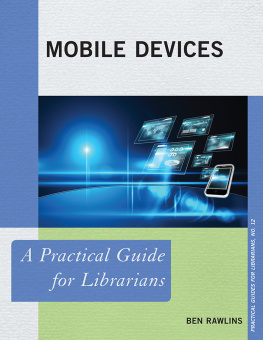
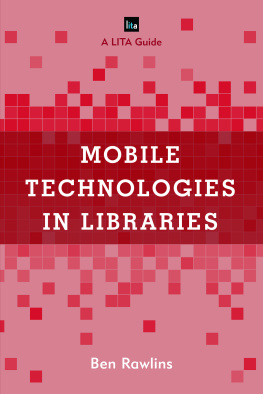


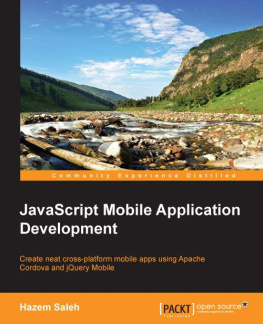
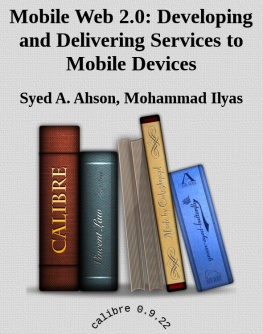

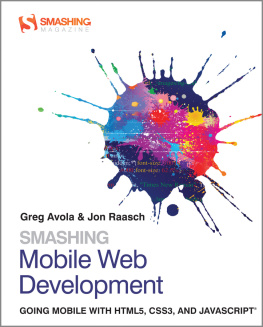
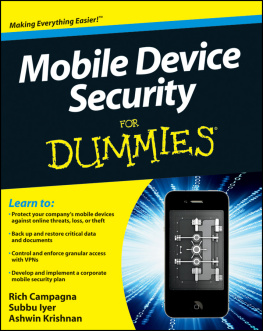
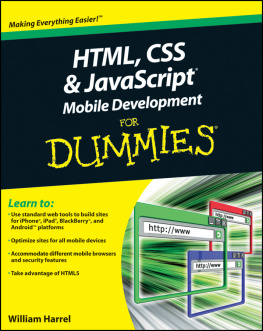

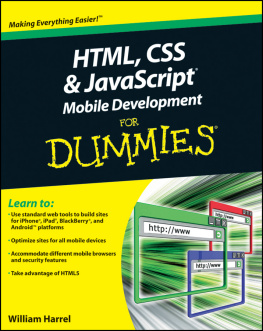
 About the Series
About the Series The paper used in this publication meets the minimum requirements of American National Standard for Information SciencesPermanence of Paper for Printed Library Materials, ANSI/NISO Z39.48-1992.
The paper used in this publication meets the minimum requirements of American National Standard for Information SciencesPermanence of Paper for Printed Library Materials, ANSI/NISO Z39.48-1992.